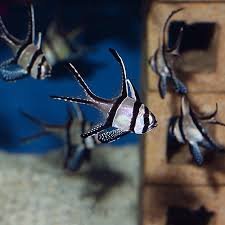
In Chinese culture, the dragon is an iconic and revered symbol that carries a deep cultural and spiritual significance. Known for its majestic presence, strength, and mysterious powers, the dragon is one of the Four Benevolent Creatures, alongside the phoenix, tortoise, and qilin. It is deeply embedded in the cultural traditions of China, where it is not only viewed as a mythical creature but also as a symbol of good fortune, prosperity, and happiness. Among the various ceremonial practices that involve the dragon, its role in Chinese wedding rituals stands out. The presence of dragons in wedding ceremonies symbolizes the union of a couple, the blessings of fertility, and the wish for a prosperous, harmonious, and joyful marriage.
This article explores the rich symbolism of the dragon in Chinese wedding customs, its significance in traditional wedding rituals, and how its image continues to play a role in modern-day Chinese weddings. We will examine the dragon’s association with happiness, fertility, and prosperity, as well as its presence in various wedding-related practices and artifacts.
1. The Symbolism of the Dragon in Chinese Culture
Before delving into its role in Chinese weddings, it’s important to understand the symbolic significance of the dragon in traditional Chinese culture. In Chinese mythology, the dragon is seen as a powerful and auspicious creature that is associated with several positive attributes. Unlike the evil, fire-breathing dragons found in Western mythology, the Chinese dragon is a benevolent creature that symbolizes good luck, success, and protection. It is often associated with water, controlling rain, rivers, and seas, and is seen as a bringer of wealth and prosperity.
The dragon is also linked to the emperor, as it was historically considered the symbol of imperial authority. The emperor’s robes were embroidered with dragon motifs, and the emperor himself was referred to as the “Son of the Dragon.” This deep connection between the dragon and imperial power elevates the dragon’s status as a divine, powerful force, capable of providing protection and blessings to those who invoke it.
In the context of Chinese weddings, the dragon’s positive associations with good fortune, power, and protection are transferred to the newlywed couple, symbolizing the strength and prosperity they will enjoy in their marital life.
2. The Dragon and the Phoenix: A Perfect Union
One of the most prominent symbols used in Chinese weddings is the pairing of the dragon and the phoenix. These two creatures represent the ideal union of opposites, mirroring the harmonious relationship between husband and wife. While the dragon symbolizes the masculine, active, and powerful energy (Yang), the phoenix represents the feminine, graceful, and nurturing energy (Yin). Together, the dragon and phoenix embody the balance of Yin and Yang, the core principle in Chinese philosophy that emphasizes harmony, balance, and mutual respect in relationships.
This pairing is not just a mere decorative choice but carries significant meaning in Chinese wedding customs. The dragon and phoenix together are symbolic of marital harmony and the mutual respect and support that the couple will offer each other. The dragon, with its regal and commanding presence, complements the graceful, elegant phoenix, creating a balanced, prosperous, and happy relationship.
The motif of the dragon and phoenix can be found in various aspects of a traditional Chinese wedding, from the decorations to the attire of the bride and groom. The dragon and phoenix are often embroidered onto the wedding garments, usually the groom’s attire or accessories, and the bride’s wedding dress, as a representation of their union and the blessings they will receive.
3. The Dragon in Traditional Chinese Wedding Attire
Chinese wedding attire is rich with symbolism, and the inclusion of dragon motifs is a common feature, especially in the groom’s clothing. Traditionally, the groom’s wedding robe would be adorned with intricate dragon patterns, often featuring the dragon embroidered on the front or back. This dragon embroidery signifies the groom’s strength, nobility, and his role as the protector and provider for his bride and their future family.
For the bride, dragon motifs are often seen in her accessories, such as the wedding veil or headpiece. The veil, traditionally worn during the wedding ceremony, may include small dragon embellishments, signifying her connection to the auspicious forces that the dragon embodies. In more elaborate weddings, the bride might wear a “dragon and phoenix” crown, a ceremonial headpiece featuring both the dragon and phoenix, symbolizing the perfect harmony and unity between the couple.
The inclusion of the dragon in wedding attire is not limited to the clothing but extends to other wedding accessories, including the wedding invitations, decorations, and wedding gifts. These items often feature stylized images of dragons or dragon and phoenix pairings, emphasizing the blessings that the couple will receive in their married life.
4. The Role of the Dragon in Wedding Ceremonies
In addition to its presence in the wedding attire, the dragon also plays an important role in the ceremonial aspects of Chinese weddings. In traditional wedding rituals, the dragon is invoked for its blessings and protection over the marriage. Several symbolic actions and rituals involve the dragon, each carrying its own meaning and significance.
4.1. The Dragon Dance
One of the most notable ways the dragon appears in Chinese wedding ceremonies is through the dragon dance. While the dragon dance is commonly associated with Chinese New Year celebrations, it also plays an important role in wedding festivities. The dragon dance, which is performed by a group of dancers manipulating a long, colorful dragon puppet, is believed to bring good luck, happiness, and prosperity to the newlyweds.
At some Chinese weddings, the dragon dance is performed as part of the wedding procession or as a separate event during the reception. The dance is intended to invoke the blessings of the dragon, ensuring that the couple will have a prosperous, joyful, and harmonious life together. The dance is accompanied by loud drums, gongs, and cymbals, which are meant to scare away evil spirits and bring good fortune.
4.2. Dragon in Wedding Rituals and Blessings
In some regions of China, the dragon is incorporated into more intimate wedding rituals. For example, the groom may give the bride a gift that is adorned with dragon imagery, such as a dragon-shaped pendant or a bracelet featuring a dragon motif. This gesture is meant to symbolize his love, protection, and the strength he will provide throughout their marriage.
In other instances, during the wedding ceremony, the officiant may offer blessings to the couple in the name of the dragon, invoking its powers to bestow good fortune, happiness, and health upon the union. These blessings are a vital part of the ceremony, emphasizing the belief that the dragon’s influence will guide the couple through the challenges of married life.
5. The Dragon in Wedding Decorations and Gifts
In traditional Chinese weddings, the dragon motif is prevalent in various wedding decorations and gifts. The wedding venue itself may be decorated with dragon imagery, from dragon lanterns to dragon-shaped sculptures. These decorations are meant to create an atmosphere of joy and celebration while ensuring the couple’s happiness and good fortune.
Wedding gifts also often feature dragon symbols. These may include traditional items like red envelopes (hongbao) with dragon designs, given to the couple by family and friends as a form of blessing. Gifts such as jade jewelry, which may be carved in the shape of dragons, are considered especially auspicious and are believed to bring prosperity and longevity to the couple’s married life.
6. The Dragon in Modern Chinese Weddings
While many aspects of Chinese weddings have evolved with time, the symbolic significance of the dragon continues to play an essential role in modern wedding ceremonies. In contemporary Chinese weddings, the dragon is still featured prominently in wedding invitations, decor, and gifts, though often in more stylized or simplified forms. Modern couples may choose to incorporate dragon imagery in their wedding themes or opt for a more traditional wedding ceremony that includes dragon dances or blessings from elders.
Even in the context of destination weddings or those held outside of China, the dragon remains a symbol of Chinese heritage and tradition, connecting the couple to their cultural roots. In globalized cities like Hong Kong, Taiwan, and Beijing, the fusion of Western and Chinese wedding traditions often results in unique adaptations of the dragon motif, blending the symbolism of the dragon with modern wedding trends.
7. Conclusion: The Dragon’s Enduring Legacy in Chinese Wedding Rituals
The dragon’s role in Chinese weddings is far more than just a cultural or aesthetic choice. It is a powerful symbol of the marriage’s potential for success, prosperity, and longevity. Through its association with happiness, protection, and harmony, the dragon continues to hold a central place in Chinese wedding customs. Whether embroidered onto clothing, invoked during rituals, or featured in wedding decorations and gifts, the dragon remains a symbol of good fortune, guiding the couple toward a future filled with blessings.
As Chinese wedding customs evolve, the dragon’s enduring presence reflects the lasting importance of tradition in celebrating the union of two lives. It is a reminder that the blessings of prosperity, happiness, and harmony are essential components of a successful marriage, and the dragon stands as a timeless protector and guide for all couples embarking on this sacred journey.



